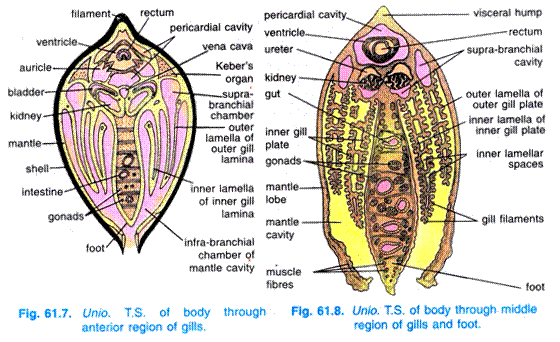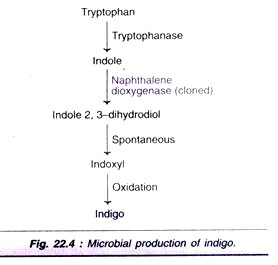Read this article to learn about Life Cycle in Dryophytes: Sexual, Vegetative and Apogamous !
Systematic Position:
Kingdom : Plantae
Phylum : Tracheophyta
Class : Filicineae
Family : Polypodiaceae
Classification is after Oswald Tippo
Habit and Habitat:
The genus Dryopteris included 250 species that are distributed in tropical, subtropical and north temperate regions of the world. In India, it is represented by 41 species, of which D. chrysocoma and D. filixmas are common.
They usually grow in moist, cool and shady places. They are also grown in green houses, gardens and summer houses for beauty of their large sized leaves. Dryopteris is herbaceous, perennial and rhizomatous.
Life Cycle of Dryopteris:
Dryopteris exhibit 3 types of life cycle:
(i) Sexual Life Cycle
(ii) Vegetative Life Cycle and
(iii) Apogamous Life Cycle.
[I] Sexual Life Cycle:
In Dryopteris, sexual life cycle is common and diplohaplontic type. In the life cycle, 2 distinct individuals, i.e. diploid sporophyte and haploid gametophyte are regularly alternate with each other. Thus, this type of alternation of generation is heteromorphic type.
1. Sporophyte:
It is dominant asexual individual of the life cycle which is perennial, evergreen and differentiated into rhizome (stem), roots and leaves (Fig. 8.2).
Rhizome:
Rhizome is the oblique, dark brown underground stem. It is usually short (about 15 cm in length), un-branched and densely covered with brown scales called ramenta. The older part of rhizome bears persistent leaf bases of dead leaves. It grows by single, pyramidal, apical meristematic ceil.
Roots:
The primary root is short-lived and soon replaced by adventitious roots. The adventitious roots are black thin, branched structures that develop acropetally from the lower surface of rhizome. They help in anchorage and absorption of water and minerals.
Leaves:
Leaves or fronds are megaphyllous, feather-like and bipinnately compound. Venation is open furcate type. They arise from upper part of rhizome & grow up to 0.1 -1.0 m in long. Young fronds show circulate ptyxis (watch-spring like coiling from apex to base) and covered with ramenta. A young frond takes about 1-2 years to unfold. The petiole extends into lamina of frond as rachis and bears two rows of leaflets or pinnae. Each pinna incised into pinnules. Each pinnule has a midrib with furcate lateral veins.
2. Sporophyll:
When the fronds are mature the ventral surface of all pinnules develops 2 rows of kidney shaped patches called sori. Such fertile fronds are called sporophyils each sorus contains large number of stalked sporangia that arise from a swollen outgrowth of pinnule called placenta. Each sorus is protected by a kidney-shaped shield called true indusium that arises from placenta (Fig. 8.2).
3. Sporangium:
A mature sporangium has a long multi-cellular stalk and biconvex lens like capsule. Stalk consists of 3 rows of elongated cells with water gland. Mature capsule contains single layered sterile jacket (wall) that encloses 32-64 meiospores of similar type (homosporous). Around two-third of the edge of capsule contain a vertical row of highly thickened cells called annulus and remaining one-third consists of thin-walled ceils a called stomium (Fig. 8.3).
4. Dehiscence of Sporangium:
In dry weather, when spores mature, the indusium shrivels to expose the sporangia. Annulus dries up, tends to straighten and in doing so, stomium rupture to release spores as from a sling or catapult. The spores are dispersed by wind and carried to a considerable distance (Fig. 8.3).
5. Germination of spore:
A haploid spore is the first cell of sexual or gametophyte generation. Under suitable moist condition, each spore germinates into a gametophyte called prothallus (Fig. 8.4).
6. Prothallus (=ProthaIlium):
It is a flat, green, non-vascular heart shaped structure with about 5- 13 mm in diameter. The dorsal surface is smooth while ventral surface contains unicellular rhizoids and sex-organs. Prothallus has a narrow posterior end and a distinct apical notch at anterior end. The rhizoids arise from the ventral side of the posterior end which helps in anchorage, absorption of water and nutrients from soil. Prothallus is short lived and dies in drought conditions (Fig. 8.4-F).
7. Sex organs:
The prothallus of Dryopteris is monoecious and bears both the sex organs on the ventral side. When starved, prothallus develops only antheridia (Fig. 8.5).
Antheridia (Male Sex organs):
They are small, sessile dome shaped and found intermixed with rhizoids. Each antheridium has a sterile 3-celled jacket wall (1st ring cell 2nd ring cell and lid or cap cell) that as closed about 32-48 androcytes. Each androcyte metamorphose into a coiled (2-3), multi-flagellate antherozoid or spermatozoid.
Archegonia (Female Sex organs):
They are sessile, flask-shaped and embedded on apical cushion just behind the apical notch. Each archegonium has a swollen venter and a backwardly projected neck. The venter encloses an egg (oosphere) and a venter canal cell, while the neck contains along, binucleate neck canal cell. In mature archegonium, the neck canal cell and the venter canal cell disintegrates into mucilaginous mass.
8. Fertilization:
When a film of water flow between prothallus and substratum, the cap cells of antheridia pushed open to release antherozoids. The antherozoids swim towards archegonia in response to malic acid released from mucilaginous mass (chemotactic). Many antherozoids swim down the neck of archegonium, only one of them fuses with egg to form a diploid zygote. Usually, cross-fertilization occurs due to protandrous nature of prothalli (i.e. antheridia mature before archegonia).
9. Development of young Sporophyte:
The Zygote (2n) is the first cell of sporophyte generation. The zygote undergoes repeated mitosis to develop embryo. The embryo has 4 district parts i.e. foot, root, astern apex and the first leaf. Foot absorbs water and minerals from young sporophyte. The stem apex grows into a rhizome. Primary root is short lived and soon replaced by adventitious roots. Thu first leaf is replaced by pinnately compound leaf. By the time young sporophyte becomes independent, the prothallus dries up and degenerates (Fig. 8.6). Although several archegonia may fertilize in a prothallus, only one sporophyte matures.
[II] Vegetative Life Cycle:
Vegetative cycle is comparatively shorter than sexual cycle. In this type of life cycle both sporophyte and gametophyte generations increase their individuals by vegetative reproduction. The sporophyte of Dryopteris undergoes “vegetative life cycles either due to fragmentation of rhizome or due to formation of adventitious buds on the petioles. A prothallus (gametophyte) undergoes budding to give rise to many daughter prothalli.
[III] Apogamous Life Cycle:
This is an abnormal life cycle where both the generations i.e. sporophyte and gametophyte are haploid.
In Dryopteris natural apogamous life cycle occurs where a sporophyte develops directly from the prothallus without any fusion of gametes.





